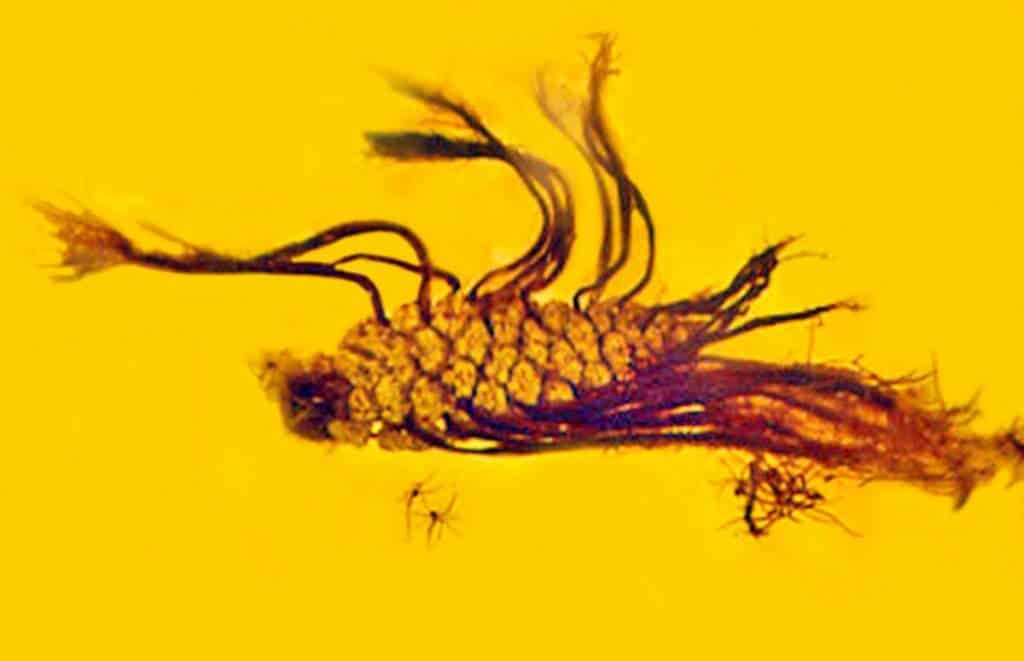A new fossil described by researchers at the Oregon State University captured a very rare occurrence in the distant past: an example of precocious germination when seeds sprout inside a living plant.

The seed belonged to an ancient pine tree and sprouted while still inside its cone. The plant lived around 40 million years ago and was discovered preserved in a piece of Baltic amber. Several plant embryos are seen sprouting from the cone inside the amber.
A bit too early
“Crucial to the development of all plants, seed germination typically occurs in the ground after a seed has fallen,” said George Poinar Jr. of the Oregon State College of Science, an American entomologist and sole author of the paper. “We tend to associate viviparity – embryonic development while still inside the parent – with animals and forget that it does sometimes occur in plants.”
The findings are particularly interesting because the fossil belongs to a conifer — which belongs to the greater botanical family of gymnosperms. While precocious germination is rare, it is more commonly found in angiosperms, flowering plants which produce their seeds inside fruits. Gymnosperms, on the other hand, produce “naked” seeds; seeds that are not enclosed in mature fruits or ovaries. It’s pretty common to see gymnosperm producing cones, for example.
“Seed germination in fruits is fairly common in plants that lack seed dormancy, like tomatoes, peppers and grapefruit, and it happens for a variety of reasons,” Poinar adds. “But it’s rare in gymnosperms.”
In fact, examples of precocious germination in pine cones is so rare that only one such event (from 1965) has been described in scientific literature, he adds. Their rarity is part of what makes the current discovery so exciting. Added to that, this is the first time this phenomenon has been seen in a fossilized specimen.
Based on the structure of the sprout — the bundles of five needle clusters surrounding its tips in particular — Poinar attributed this specimen to the extinct pine species Pinus cembrifolia. This species has been previously described from other specimens of Baltic amber; examples of pines in Baltic amber are rare to begin with, he adds, despite the fact that the morphology of their cones makes them ideal for preservation in amber and keeps them virtually intact through this process.
Precocious germination is the more common of two types of viviparity, Poinar explains, the other being known as ‘vegetative viviparity’. In the case of this fossil, it’s very likely that some if not all the development of the sprout occurred before the cone fell from its mother tree into resin.
“Often some activity occurs after creatures are entombed in resin, such as entrapped insects depositing eggs,” Poinar said. “Also, insect parasites sometimes flee their hosts into the resin after the latter become trapped. In the case of the pine cone, the cuticle covering the exposed portions of the shoots could have protected them from rapid entrance of the resin’s natural fixatives.”
Beyond how spectacular this specimen itself is, the finding helps us gain a better idea of the environmental conditions in the Baltic region during the time of this pinecone. Previous research on viviparity occurrence in gymnosperms suggests that such events are linked to winter frosts. Light frosts would have been possible in the region if it had a humid, warm-temperate climate; this conclusion supports previous hypotheses regarding Baltic climates in the Eocene, the period when this pine cone grew and fell into amber.
The paper “Precocious germination of a pine cone in Eocene Baltic amber” has been published in the journal Historical Biology.






